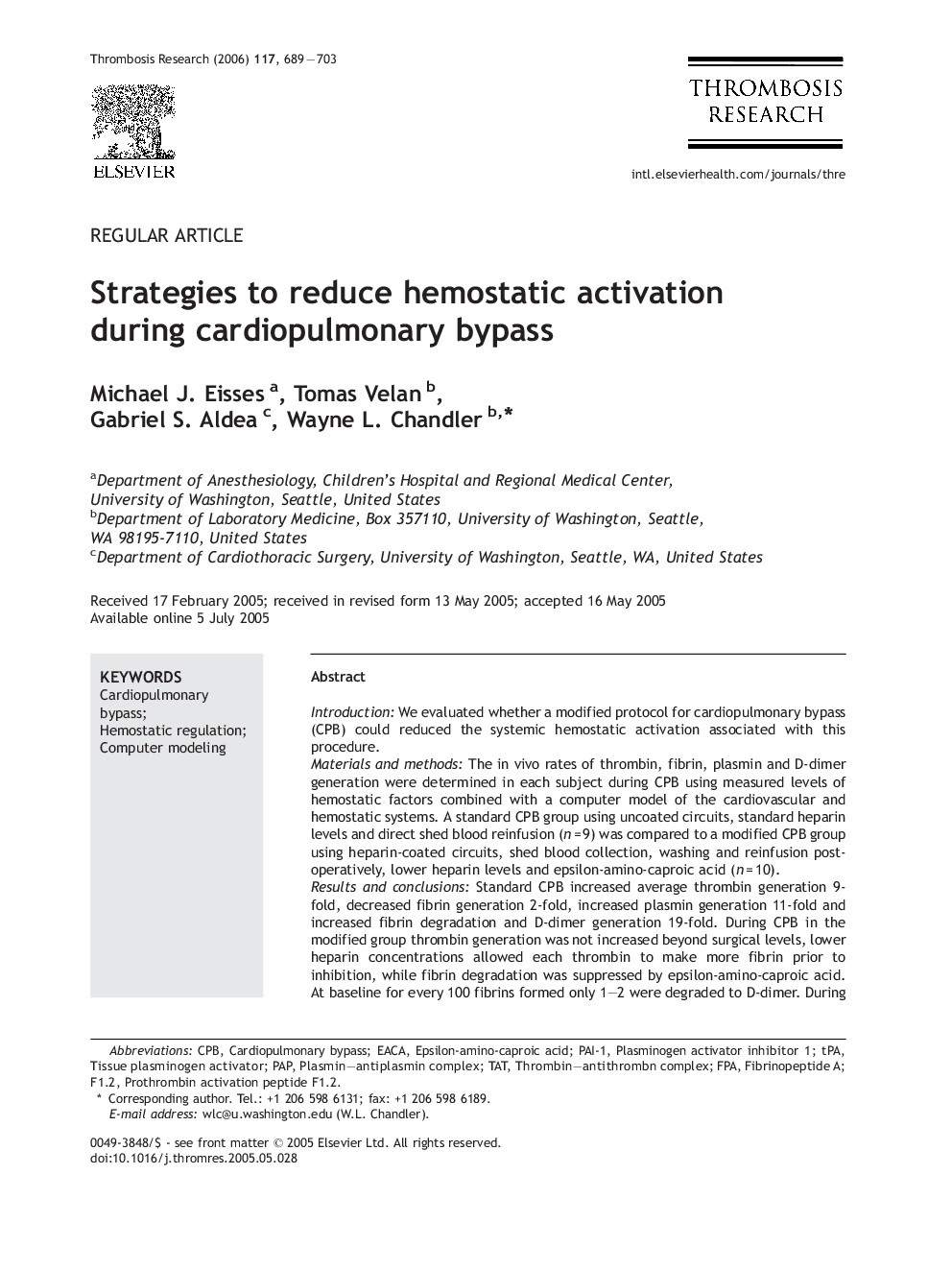| Article ID | Journal | Published Year | Pages | File Type |
|---|---|---|---|---|
| 3030037 | Thrombosis Research | 2006 | 15 Pages |
IntroductionWe evaluated whether a modified protocol for cardiopulmonary bypass (CPB) could reduced the systemic hemostatic activation associated with this procedure.Materials and methodsThe in vivo rates of thrombin, fibrin, plasmin and D-dimer generation were determined in each subject during CPB using measured levels of hemostatic factors combined with a computer model of the cardiovascular and hemostatic systems. A standard CPB group using uncoated circuits, standard heparin levels and direct shed blood reinfusion (n = 9) was compared to a modified CPB group using heparin-coated circuits, shed blood collection, washing and reinfusion post-operatively, lower heparin levels and epsilon-amino-caproic acid (n = 10).Results and conclusionsStandard CPB increased average thrombin generation 9-fold, decreased fibrin generation 2-fold, increased plasmin generation 11-fold and increased fibrin degradation and D-dimer generation 19-fold. During CPB in the modified group thrombin generation was not increased beyond surgical levels, lower heparin concentrations allowed each thrombin to make more fibrin prior to inhibition, while fibrin degradation was suppressed by epsilon-amino-caproic acid. At baseline for every 100 fibrins formed only 1–2 were degraded to D-dimer. During standard CPB for every 100 fibrins generated on average 34 fibrins were degraded with some subjects showing a net fibrin loss. In contrast, in the modified CPB group for every 100 fibrins formed only 4 fibrins were degraded (p < 0.0001 vs. standard group). Kinetic modeling of hemostasis in individual patients showed that a modified CPB protocol could reduce excessive thrombin generation during CPB and suppress fibrin degradation moving hemostatic regulation back towards normal.
